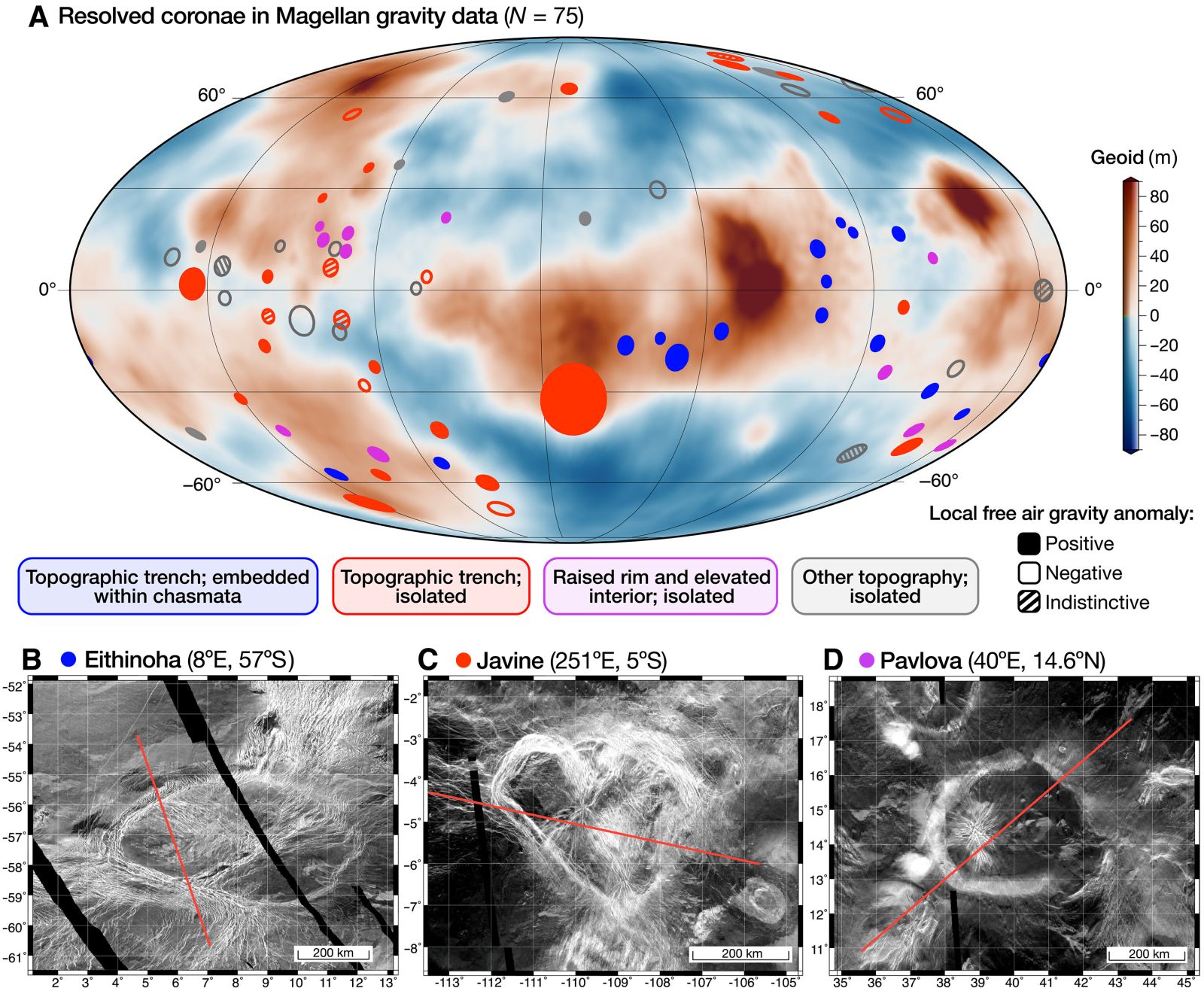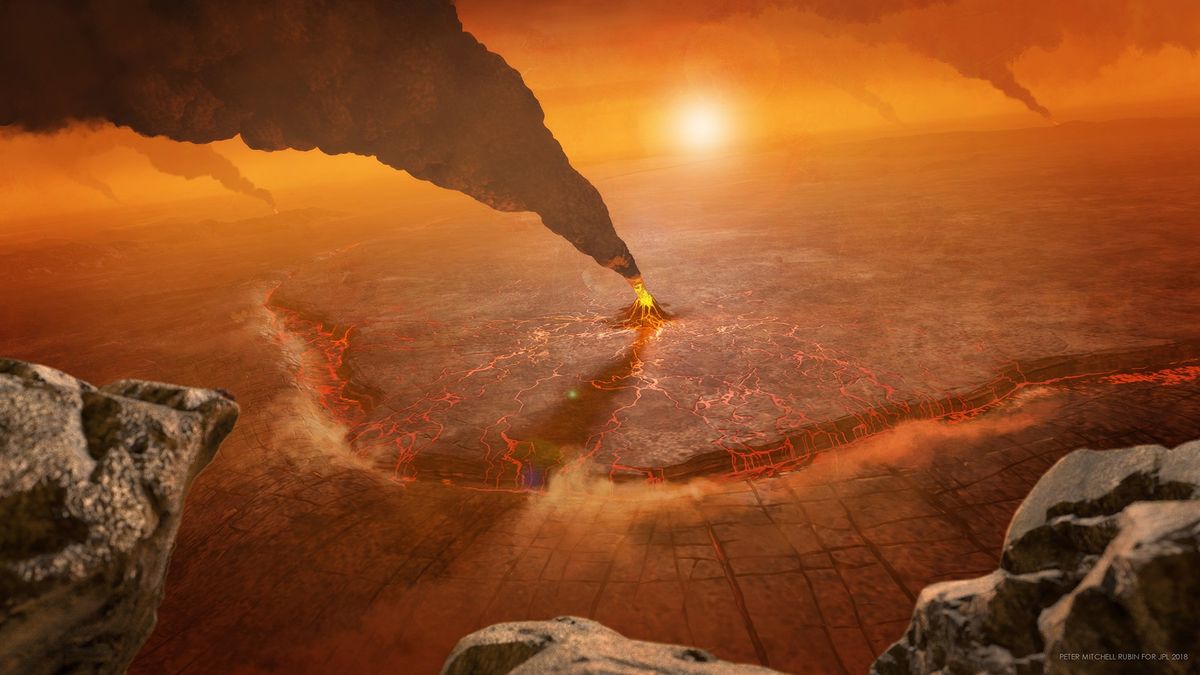Where do these dozens of recent circular structures on Venus come from? ⭕
Follow us on Google News (click on ☆)

Global map showing 75 circular structures called coronae, identified using gravity data from the Magellan spacecraft. These coronae are plotted according to their position and size. Color and fill indicate their shape and the type of gravitational anomaly detected. Coronae with a positive gravitational anomaly are considered active, meaning they may still be linked to internal movements of the planet.
Three examples illustrate the different types of active coronae, based on surface radar images taken by Magellan.
An international team modeled Venus's internal processes to understand the formation of coronae. Their simulations, compared with data from the Magellan mission, suggest more intense tectonic activity than expected. Gravimetry helped identify plumes of less dense material beneath the surface.
Of the 75 coronae studied, 52 show signs of recent activity. This discovery implies that Venus could still be geologically active today. The mechanisms at play include subduction and lithospheric flow, processes similar to those observed on Earth.
Researchers have proposed several scenarios to explain these formations. One involves mantle plumes that, as they rise, could trigger volcanic eruptions and crustal deformations. These processes might shed light on Earth's geological history before the onset of plate tectonics.
The VERITAS mission, planned for 2031, promises to provide more precise answers. Its instruments will deliver much higher-resolution images and gravimetric data. This could mark a turning point in our understanding of Venus and terrestrial planets in general.

Radar image of a corona named Aine Corona, located in a plain south of Aphrodite Terra. This structure measures approximately 200 km (124 miles) in diameter.
Credit: NASA/JPL
This study, published in Science Advances, opens new perspectives on the internal dynamics of planets. It highlights the importance of exploring Venus to better understand the mechanisms that shaped Earth and other rocky worlds.
How do coronae form on Venus?
Coronae result from the interaction between mantle plumes and Venus's lithosphere. These plumes, composed of hot, less dense material, rise toward the surface, creating circular deformations.

Artist's depiction of the Quetzalpetlatl corona, with a subduction zone and volcanic activity.
Credit: NASA/JPL-Caltech/Peter Rubin
The rigid, cold lithosphere cracks and deforms under pressure. This process can lead to the formation of concentric fractures and ridges, characteristic of coronae.
On Earth, similar phenomena may have occurred before the establishment of plate tectonics. Venus's coronae thus offer an analog for studying the early stages of planetary geological evolution.
The diversity of coronae suggests multiple mechanisms may be at play, including subduction and lithospheric flow. These processes highlight the complexity of Venus's internal dynamics.
Why is Venus so geologically different from Earth?
Venus and Earth are similar in size and composition, but their geological evolutions diverged. The absence of plate tectonics on Venus is one of the key differences.
Venus's dense, hot atmosphere prevents efficient heat loss, which might explain the lack of mobile tectonic plates. Heat accumulates, favoring episodes of massive resurfacing.
Coronae and other geological structures on Venus indicate significant internal activity, but different from Earth's. These differences could be linked to the planet's thermal history and composition.